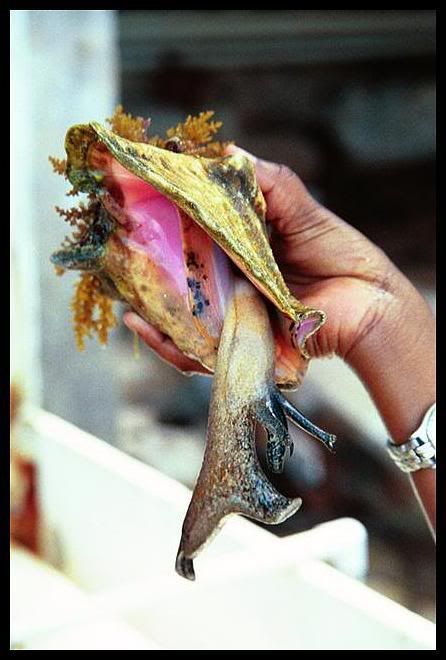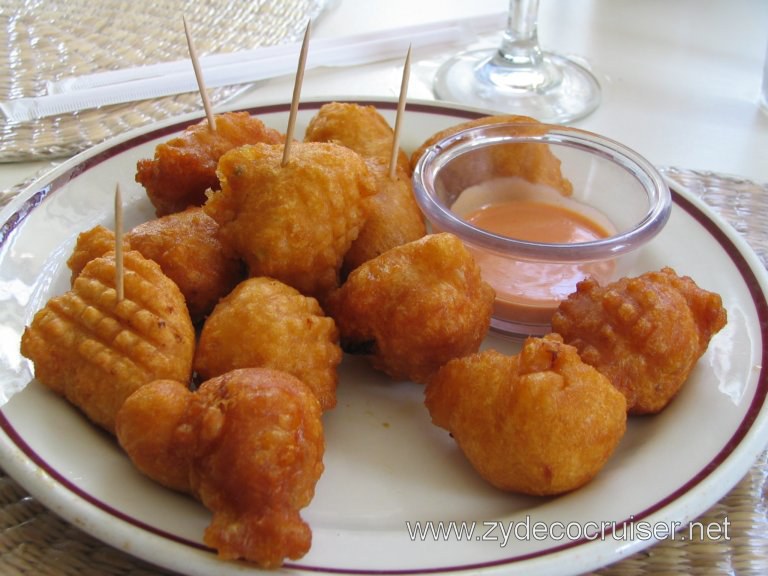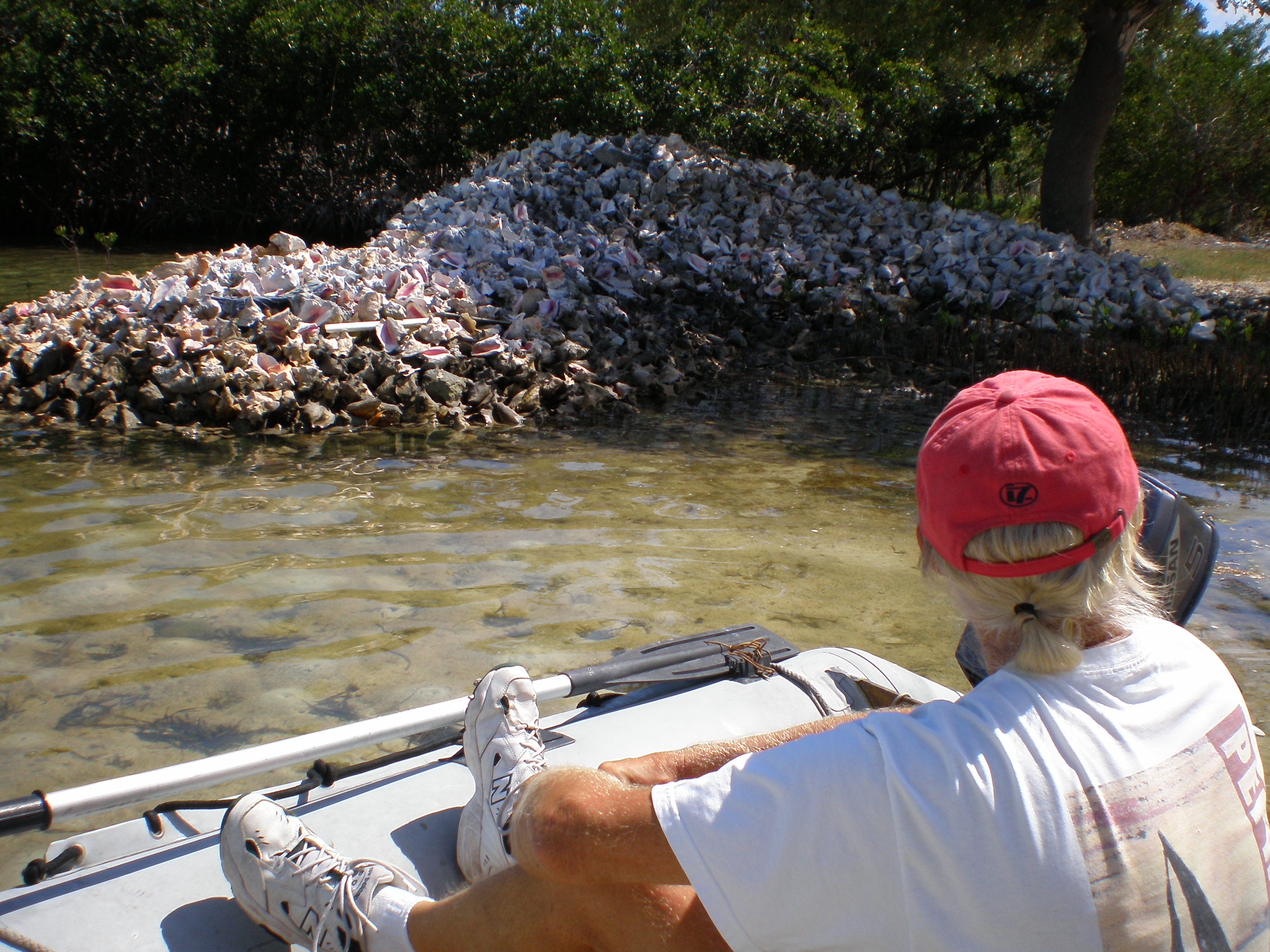jamesp
Cave Dweller 
Member since October 2012
Posts: 36,601
|
Post by jamesp on Mar 11, 2014 19:53:25 GMT -5
Oysters, mangrove root casts and a few corals found in Florida last week. The ones with a white coating have nice yellow to orange centers. They will cook to richer colors. All seem well silicified. The white coated oysters  Darker oysters w/clear insides  Oyster w/white coating split  Darker coating on these two   The front section of a conch sawn in half. Poorly silicified. These could be cool if well silicified.  Packing them in sand for cooking  Filling the oven. Total of 4 roast pans. The rest was filled with coral heads.  Bring a good set of teeth. Fried aged oysters are loaded w/silica. They will be dried at 200F for a total of 30 hours. And gradually heated to 600F and held for 8 hours and then gradually cooled. Should get lots of oranges and reds. |
|
grayfingers
Cave Dweller 
Member since November 2007
Posts: 4,575 
|
Post by grayfingers on Mar 11, 2014 20:41:44 GMT -5
Nice. Love the identification lessons via good photos of the rough finds. Useful for anyone living where marine fossils are to be found.
Amazing internal structures in those, I wounder if you might someday find a silicate replaced oyster with a pearl nestled inside. . .
Conch, is a snail?
|
|
|
|
Post by rockpickerforever on Mar 11, 2014 21:01:41 GMT -5
James, you have been busy boy! Nice finds, thanks for sharing them with us. Can't wait to see them cooked.
Finding a pearl would be the icing on the cake! That would really be something. |
|
quartz
Cave Dweller  breakin' rocks in the hot sun
breakin' rocks in the hot sun
Member since February 2010
Posts: 3,359
|
Post by quartz on Mar 11, 2014 21:30:16 GMT -5
Eastern Oregon has a bird called a Chukar. You bag some and throw them into a big iron pot with a bunch of rocks, add water and cook for three days. Then you toss out the birds and eat the rocks. Hmmm, oyster flavoring might be really good.
|
|
jamesp
Cave Dweller 
Member since October 2012
Posts: 36,601
|
Post by jamesp on Mar 13, 2014 6:45:10 GMT -5
Nice. Love the identification lessons via good photos of the rough finds. Useful for anyone living where marine fossils are to be found. Amazing internal structures in those, I wounder if you might someday find a silicate replaced oyster with a pearl nestled inside. . . Conch, is a snail? This is a conch Bill. It is like a snail but larger. Those w/a taste for strong tasting chewy seafood will cook up some 'conch fritters'. A coastal specialty common around Brunswick to Savannah Georgia. Similar to shoe leather but tougher. And tastes much worse. And a whole lot uglier  Fritters(fried conch meat). The sauce is a north Florida/coastal Georgia mix of 1/3 catchup, 1/3 cocktail sauce and 1/3 mayonnaise. Served with grits, slaw and hush puppies. I have shared the simple sauce w/renown chefs in the Atlanta area. Knocked their socks off.  This is a conch mound probably left by the ancients. Shell mounds like this were harvested by grading companies for highway underlayment in Florida until the 50's. Hwy 19 near my camp in Florida was underlayed for 15 miles from a shell mound 3 stories tall and 100 yards long removed from Silver Glenn Springs. It was one of the largest mounds in the world. Of course the practice has been outlawed. The beach of my camp is snail midden 2-3 feet deep. The smelly waste shells were usually placed on the SE side of the camp to let prevailing wind blow the smell away. I can spot midden rich ground from long distances from out in the lake in spring by looking for Soap Berry trees. The like to grow in the lime rich middens. And have a lime green spring colored leaf.  |
|
jamesp
Cave Dweller 
Member since October 2012
Posts: 36,601
|
Post by jamesp on Mar 13, 2014 7:08:53 GMT -5
Eastern Oregon has a bird called a Chukar. You bag some and throw them into a big iron pot with a bunch of rocks, add water and cook for three days. Then you toss out the birds and eat the rocks. Hmmm, oyster flavoring might be really good. I think you would be better off eating the conch shells than the fritters in this case Larry. Some critters are better off not eaten ! Chukars too, thanks for the warning. There is a big movement in the high end restaurant business to serving foods that woodsy people have eaten for years-turtle, gator, conch, low country boils, etc. Here in Atlanta anyway. |
|
|
|
Post by Peruano on Mar 13, 2014 8:04:40 GMT -5
Geology, archeology, culinary science, art, thermodynamics, and culture. Its all here and we owe it in part to James. Keep on cooking. Tom
|
|
jamesp
Cave Dweller 
Member since October 2012
Posts: 36,601
|
Post by jamesp on Mar 13, 2014 8:25:22 GMT -5
Geology, archeology, culinary science, art, thermodynamics, and culture. Its all here and we owe it in part to James. Keep on cooking. Tom That's funny Tom. It is a diverse process. I always add more than i should. Thanks for your patience. |
|
|
|
Post by pghram on Mar 20, 2014 21:49:47 GMT -5
Mmmm' conch fritters, that brings back some great memories.
Rich
|
|
jamesp
Cave Dweller 
Member since October 2012
Posts: 36,601
|
Post by jamesp on Mar 20, 2014 23:07:31 GMT -5
Mmmm' conch fritters, that brings back some great memories. Rich If the cook knows what he is doing they are good. Takes a bit of skill on those. |
|
|
|
Post by iant on Mar 21, 2014 14:45:47 GMT -5
Interesting material, and a superb setup you have there James.
Hope you get some great results!
|
|
jamesp
Cave Dweller 
Member since October 2012
Posts: 36,601
|
Post by jamesp on Mar 21, 2014 20:38:52 GMT -5
Interesting material, and a superb setup you have there James. Hope you get some great results! A lot of the stuff available to me benefit from heating. Your Scottish agates need no such treatment. they are fine looking. Amazing that agate is such a world wide material. |
|
Fossilman
Cave Dweller 
Member since January 2009
Posts: 20,718 
|
Post by Fossilman on Mar 26, 2014 9:23:12 GMT -5
HOLY MOLY JAMES!!!! That's some awesome stuff,would have never known the colors if a guy didn't cut stuff.....Thumbs up
|
|
miander
spending too much on rocks
  Searching for the shop of my dreams...
Searching for the shop of my dreams...
Member since November 2013
Posts: 407 
|
Post by miander on Mar 29, 2014 23:39:05 GMT -5
You are such an interesting fellow JamesP, I love your posts for the pictures, the humor and the knowledge. You are one of the living gems at RTH!
|
|
miander
spending too much on rocks
  Searching for the shop of my dreams...
Searching for the shop of my dreams...
Member since November 2013
Posts: 407 
|
Post by miander on Mar 29, 2014 23:41:24 GMT -5
Oh, except for the live conch! My stomach heaved when I thought of the work it must take to get a mouthful of that enormous mollusk down the old gullet, ugh!
|
|
jamesp
Cave Dweller 
Member since October 2012
Posts: 36,601
|
Post by jamesp on Mar 30, 2014 4:54:34 GMT -5
You are such an interesting fellow JamesP, I love your posts for the pictures, the humor and the knowledge. You are one of the living gems at RTH! Thank you for your kind words miander. Perhaps a shipment of conch meat is in order. 50 pounds ??  Or would you prefer dark meat ??  |
|
jamesp
Cave Dweller 
Member since October 2012
Posts: 36,601
|
Post by jamesp on Mar 30, 2014 5:37:35 GMT -5
Ya know, those things are totally ugly. u-g-l-y. However, raw oysters are not exactly pretty. On the Gulf of Mexico is an old fishing town called St. Mark's.
One of the last 'old Florida' fishing towns similar to the ones my family is from (Fernandina Beach). I stop by St. Mark's and pick up a bushel basket
full of oysters(in the shell) for $35 when in the area. Then a bottle of hot sauce, Saltine crackers, a shucking knife and lots of beer. Exquisite meal.
My Grandmother lived on the beach right on Hwy A1A, the sunshine highway in Fernandina. Her long driveway was paved in crushed oyster shells. I ran around barefooted
and often got a shell stuck in my foot which invariably led to blood poisoning. Always got over it but never learned a lesson.
The paper mills on Amelia Island where Fernandina is located pumped their effluent into the ocean killing many oyster beds. They figured it out and stopped
the practice and the oysters are making a come back. The conchs are bottom feeders and were not effected.
My Grandfather and his brother ran a pogie fishery on the island for many years. Average catch was 100,000 fish. Along w/the pogie fish were food fish.
The family lived off seafood from those large nets. Shrimp, rock shrimp, bulldozers, stone crabs, blue crabs and a bunch of other crustaceans that may not
even have a name were also harvested. Some of them very expensive table fare. Fernandina was a wild town back in the day. Had a reputation as a smuggling
town. #2 in Florida per capita at one time(the 70's). Being a fishing family such activity was dangerous to know about.
|
|
Fossilman
Cave Dweller 
Member since January 2009
Posts: 20,718 
|
Post by Fossilman on Mar 30, 2014 9:10:08 GMT -5
We drive pass those oyster farms on the northern west coast here,quite the smell,but not as bad as the dairy farm we have in our area,about five miles down the road......Now that will tip your bucket over!!! LOL
|
|
jamesp
Cave Dweller 
Member since October 2012
Posts: 36,601
|
Post by jamesp on Mar 30, 2014 10:05:48 GMT -5
We drive pass those oyster farms on the northern west coast here,quite the smell,but not as bad as the dairy farm we have in our area,about five miles down the road......Now that will tip your bucket over!!! LOL That sea smell is perfume to me. Strange how odors are so well connected to your memory. I keep telling my wife to get old perfume so she can remind me of her youth, Micheal. Did not go over so well.... |
|
quartz
Cave Dweller  breakin' rocks in the hot sun
breakin' rocks in the hot sun
Member since February 2010
Posts: 3,359
|
Post by quartz on Mar 30, 2014 23:11:17 GMT -5
Carol says oysters are sold by the dozen here, 98 cents/oyster.
|
|





























